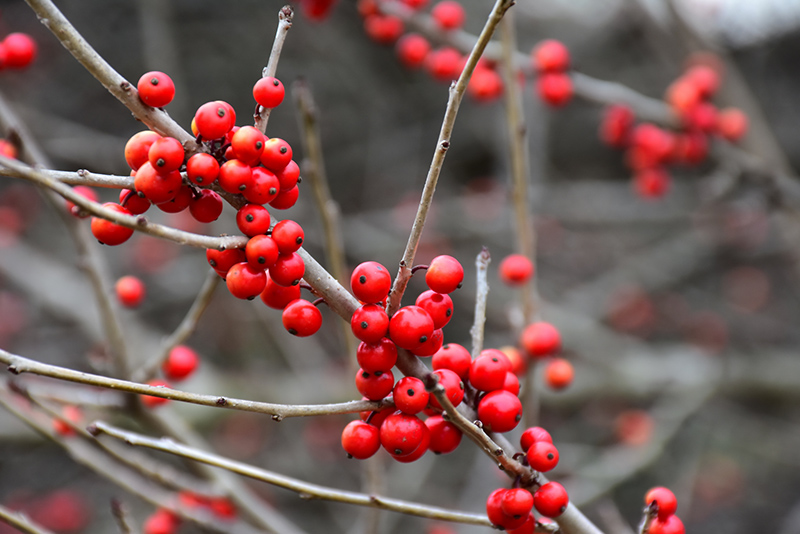>> Home
Warren's Red Possumhaw Holly
Ilex decidua 'Warren's Red'
Height: 15 feet
Spread: 12 feet
Sunlight:
![]()
![]()
Hardiness Zone: 4
Other Names: Possum Haw, Deciduous Holly, Bearberry
Description:
A versatile large shrub or small tree with showy deep red berries throughout winter, requires a male pollinator to produce the berries; does best in moist acidic soils, good for problem areas; one of the last to drop leaves in fall
Ornamental Features
Warren's Red Possumhaw Holly is primarily grown for its highly ornamental fruit. It features an abundance of magnificent red berries from mid fall to late winter. It has dark green deciduous foliage. The glossy pointy leaves turn yellow in fall. The smooth silver bark is extremely showy and adds significant winter interest.
Landscape Attributes
Warren's Red Possumhaw Holly is a multi-stemmed deciduous shrub with a shapely oval form. Its average texture blends into the landscape, but can be balanced by one or two finer or coarser trees or shrubs for an effective composition.
This is a relatively low maintenance shrub, and is best pruned in late winter once the threat of extreme cold has passed. It is a good choice for attracting birds to your yard. It has no significant negative characteristics.
Warren's Red Possumhaw Holly is recommended for the following landscape applications;
- Mass Planting
- Hedges/Screening
- General Garden Use
- Naturalizing And Woodland Gardens
Planting & Growing
Warren's Red Possumhaw Holly will grow to be about 15 feet tall at maturity, with a spread of 12 feet. It has a low canopy with a typical clearance of 1 foot from the ground, and is suitable for planting under power lines. It grows at a slow rate, and under ideal conditions can be expected to live for 40 years or more. This is a female variety of the species which requires a male selection of the same species growing nearby in order to set fruit.
This shrub does best in full sun to partial shade. It prefers to grow in moist to wet soil, and will even tolerate some standing water. It may require supplemental watering during periods of drought or extended heat. It is very fussy about its soil conditions and must have rich, acidic soils to ensure success, and is subject to chlorosis (yellowing) of the foliage in alkaline soils. It is somewhat tolerant of urban pollution. Consider applying a thick mulch around the root zone in winter to protect it in exposed locations or colder microclimates. This is a selection of a native North American species.
